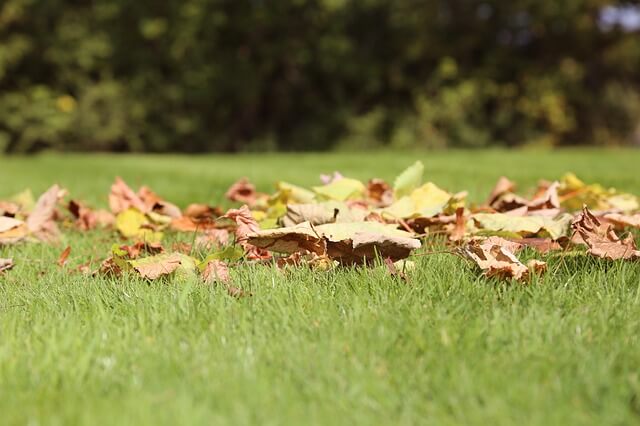How does the robotic lawnmower deal with fallen fruit and the like?
12.05.2021
In principle, the lawn should be completely free of foreign objects. Of course, it happens from time to time that a small branch falls from a tree overnight, some fallen fruit lies on the lawn in autumn or a squirrel has lost a walnut. There are many reasons for objects that do not belong on the lawn. So how does the robotic lawnmower deal with these foreign objects? When can they be problematic?
Which objects are problematic for robotic mowers?
Besides toys that have not been cleared away, most foreign debris probably comes from trees:
- branches and twigs
- fallen fruit
- nuts
- pine, larch and spruce cones
Does foliage damage the robotic lawnmower?
Obviously, leaves also fall from trees in the fall/autumn. However, these do not pose any challenges to the mower and are simply chopped up regardless of the type of blades you are using. Blade discs cut leaves, while star blades shred them completely. The only problem is that leaves prevent the lawn from being sufficiently aerated. Consequently, this can lead to the formation of mold, especially in the fall/autumn. For this reason alone, you should remove leaves regularly for the sake of your lawn.
Leaves can also prove problematic, especially when they are wet. They can get caught in the wheels, which can have negative effect on traction. It is not uncommon for a robot to get stuck or start to wobble on a slippery slope.
This can easily be remedied by wheels that have particularly good traction and thus provide the necessary grip on any terrain.
It all depends on the blades
Two different types of blades are used in robotic mowers. One specific type are blade discs onto which individual blades are attached. Another specific type manufacturers rely on are three- or four-pronged star knives. These are significantly more robust than the blade discs.
With blade discs, for example, small branches are problematic. For star blades, only larger ones pose a problem.
Fallen fruit is simply chopped up by star blades, while blade discs put nicks in fallen fruit.
Cones, on the other hand, are problematic for both blade discs and star blades. They can get wedged in the mower and cause the drive wheels to be lifted up. Blade discs in particular, will quickly become dull.
Blade discs are significantly more sensitive to nuts. While star blades only dull slightly, the cutting performance of blade discs decreases very quickly.
Blades dull regardless of what type your robotic lawnmower has. In any case, the blades blunt faster than usual due to contact with foreign bodies. Sooner or later, this will lead to an unclean cut. They will no longer cut cleanly but rather knock grass blades off leaving behind frayed tips, which become prone to unsightly brownish discoloration.
Manufacturer's warranty protects against defects
The manufacturer's warranty may save you from repair costs and provide satisfactory solutions in the event of problems. On top of the legal manufacturer's two-year warranty, some robot models come with an additional bonus of one year. The warranty is, therefore, for a full three years.
Spare parts and accessories are also covered by a six-month warranty. However, this does not apply to worn parts such as the blades. It is extremely advisable to handle the robotic lawnmower carefully to avoid unnecessarily frequent replacements.
The basic requirement to be able to make a claim under warranty is, as everywhere, the proper use of your robotic lawnmower.
Large obstacles are bypassed
Sometimes fallen fruit and other debris can be so small that they are simply run over by the robotic lawnmower. However, if there are larger obstacles on the surface, the innovative and modern sensors of the devices detect them at an early stage and change direction in time.
Robotic mowers and fallen fruit - how to protect your robotic mower
In order to protect a robotic lawnmower from damage caused by fallen fruit and the like, the first thing to do is to collect the foreign objects regularly. However, this is sometimes tedious and the probability is high that something will be overlooked, especially with larger lawns.
With a fruit collector, at least the problem of fallen fruit can be eliminated. With this wire basket on a handle, fruit can be collected quite effortlessly without bending over.
In flat terrain it is also possible to install an apple deflector. This deflector acts as a bumper in front of the robot, preventing foreign objects from getting underneath. Instead, they are merely pushed to the edge of the lawn. However, this solution works only if the ground is free of major bumps, where the robot would rest.
If you can't guarantee that foreign objects won't find their way onto the lawn every now and then, and you still don't want to constantly replace the blades, a lawn robot with star blades is a good choice. Of course, it is not to say that the knives won’t dull over time. Regardless, they are much more robust and durable when coming into contact with fallen fruit and other debris.
Products
Buy a Robomow
Robomow owner
About us
Sales & Support


